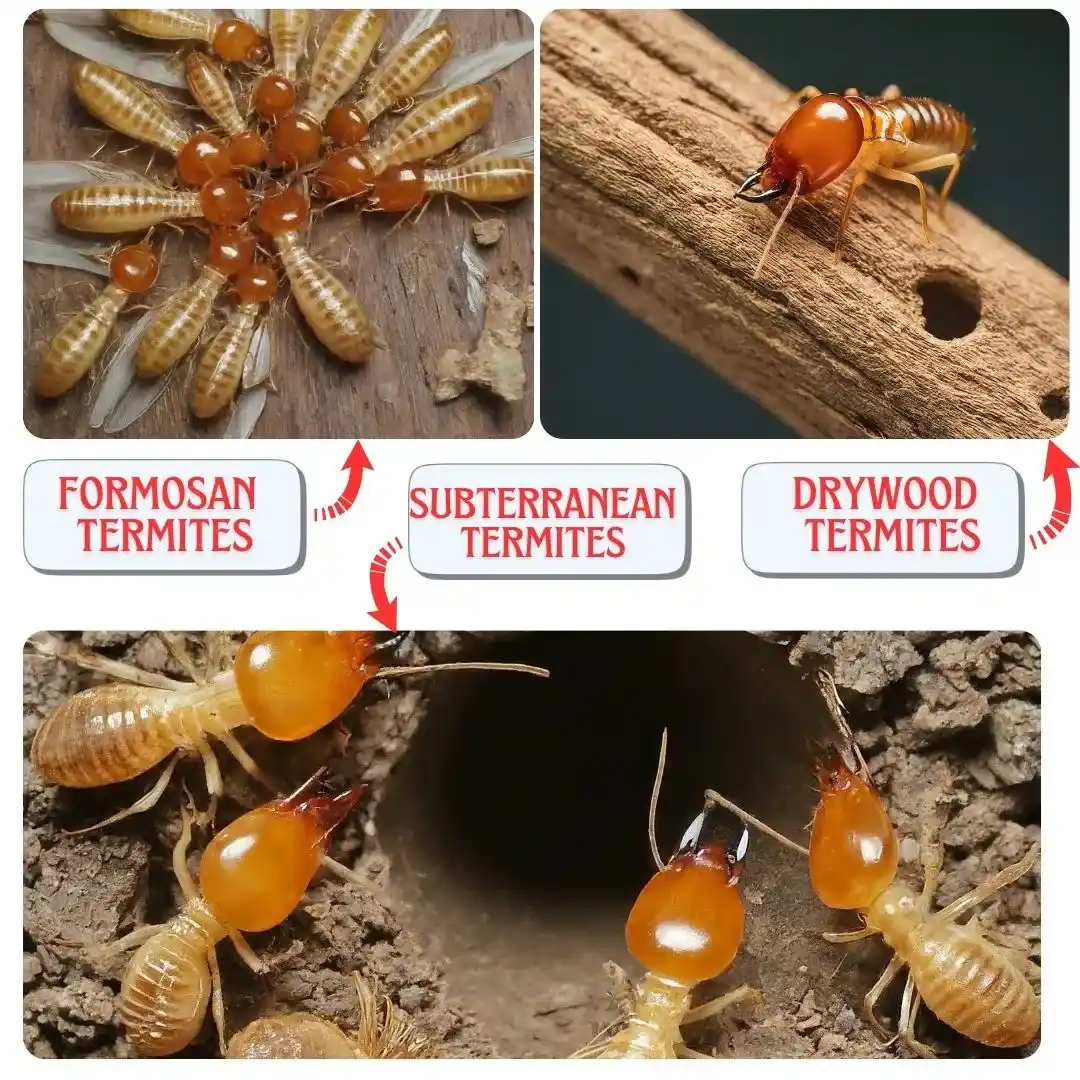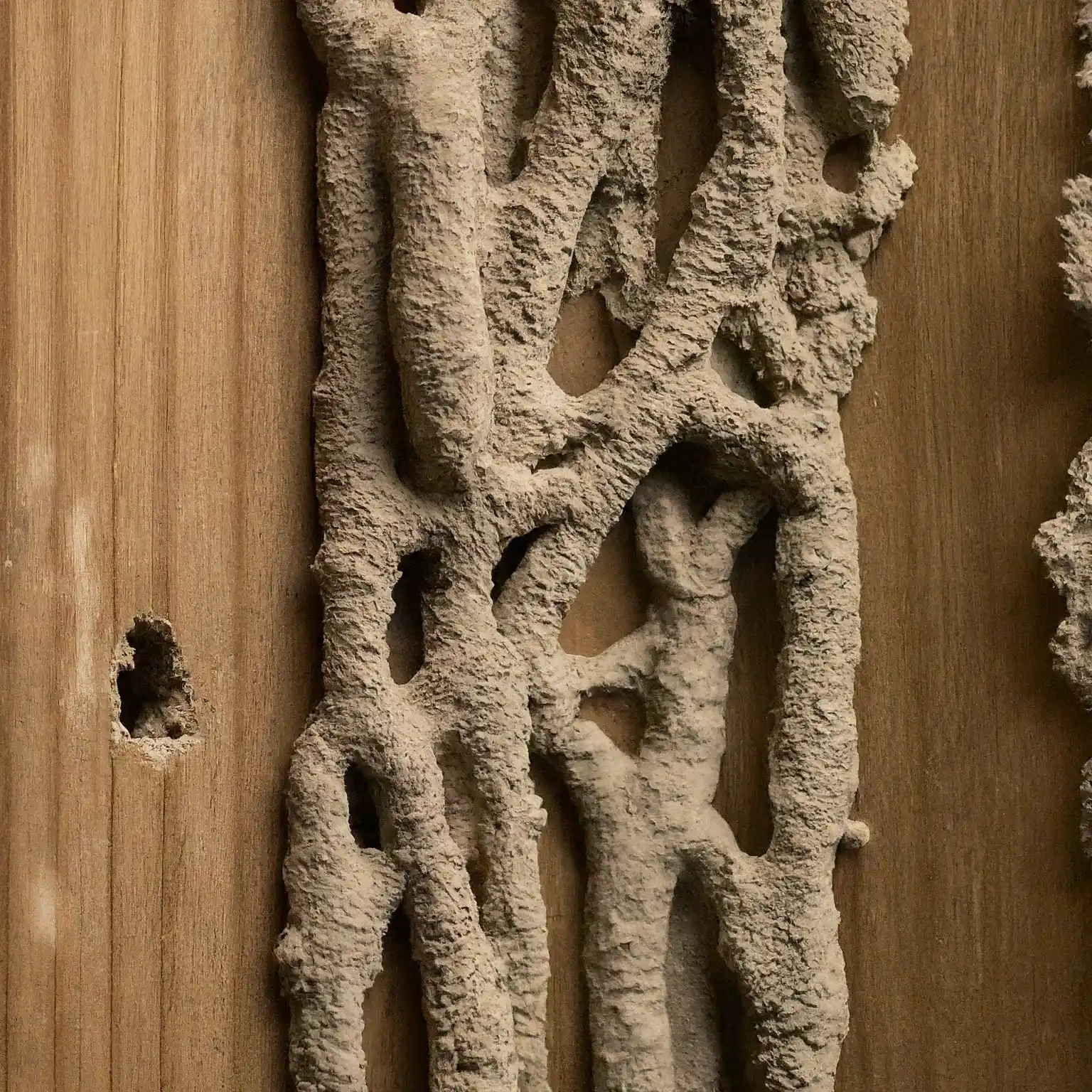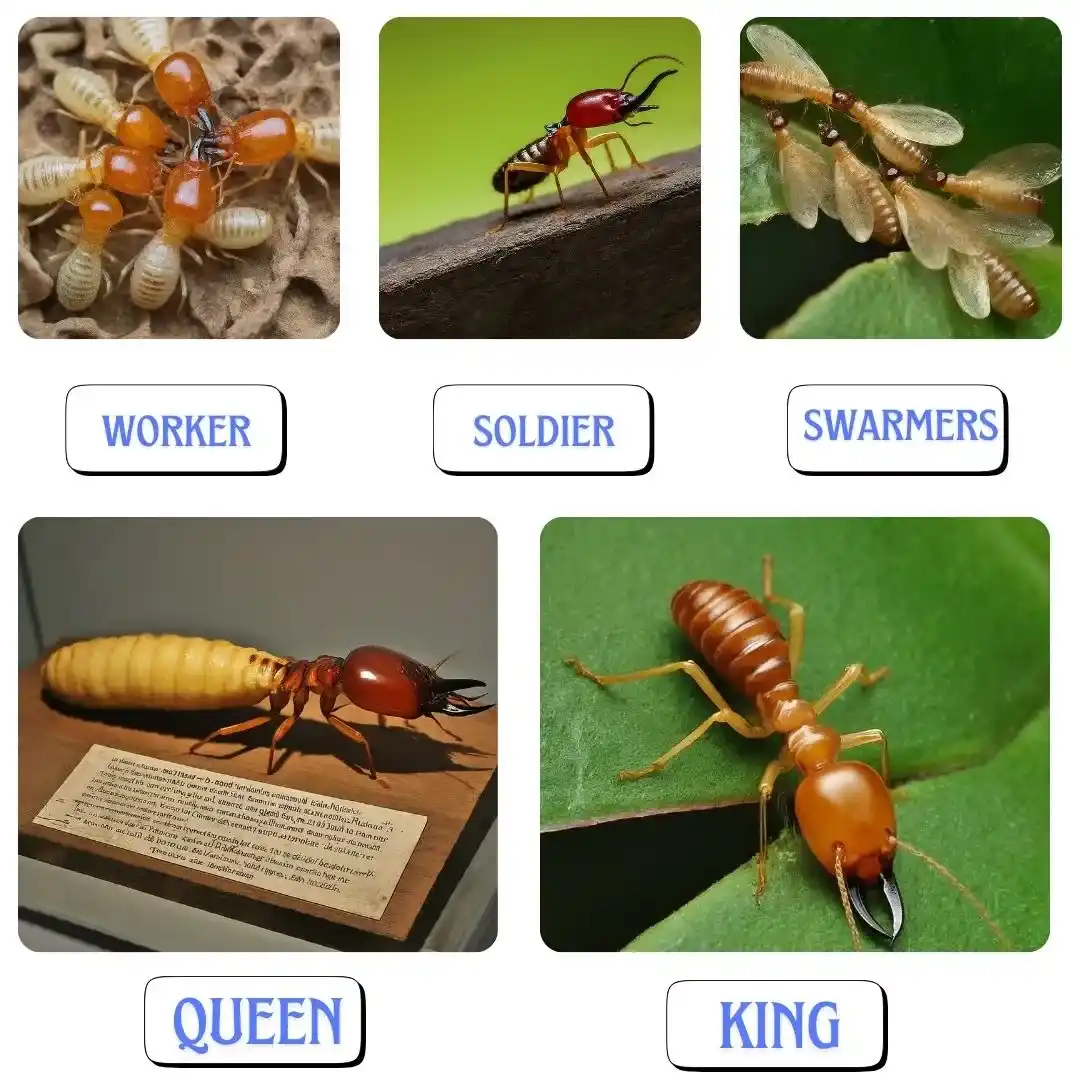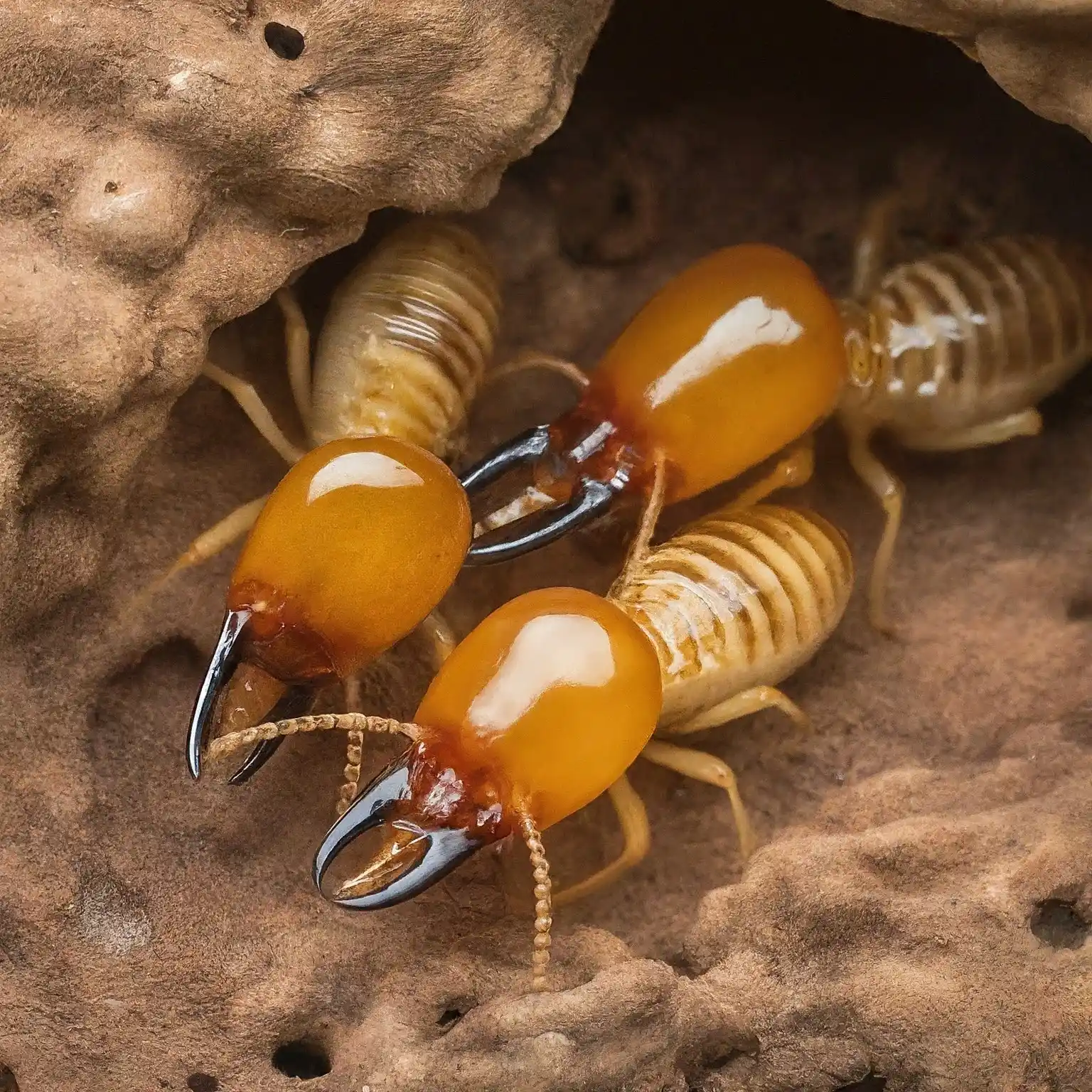What Do Termites Look Like?Termites are a nightmare for houses: if you don’t deal with an infestation quickly, it can cause serious damage. So it’s important to know how to spot them.
Understanding their appearance, habits, and the signs of infestation is not just beneficial but crucial in protecting your home. Additionally, recognizing the various types of termites, such as subterranean and drywood termites, can help you take proactive measures.
Therefore, this article will provide a comprehensive overview of termite identification and prevention strategies. By learning how to recognize the signs of an infestation early on, you can effectively safeguard your living space before it’s too late.
Moreover, being informed about termite behaviors and characteristics can empower you to make knowledgeable decisions about home maintenance and pest control.
Understanding Termites and Their Impact on Homes
Why Identifying Termites Is Crucial
Identifying termites is essential because they can cause extensive damage that often goes unnoticed until significant harm has been done. For example, a friend of mine ignored the small flying insects she spotted near her attic, mistaking them for harmless moths. By the time she realized they were termites, she faced costly repairs that could have been avoided with early detection.
The Types of Termites Found in Homes

Understanding the different types of termites can help you recognize them faster. The three most common types are:
Subterranean Termites
- Habitat: These termites live underground and create mud tubes to travel between their colonies and food sources.
- Damage Potential: Furthermore, they can cause severe structural damage, particularly to wooden foundations.
Drywood Termites
- Habitat: These termites nest within the wood they consume.
- Signs of Infestation: Look for small pellets resembling sawdust, which are their droppings.
Formosan Termites
- Habitat: Known as one of the most destructive species, Formosan termites can form large colonies.
- Damage Potential: They can cause extensive damage in a remarkably short period, especially in warmer climates.
What Do Termites Look Like?
What do termites look like? Appearance vs. Other Insects
Many people confuse termites with other insects, particularly ants. Understanding their distinct features is vital for accurate identification.
Winged Termites vs. Flying Ants
- Body Structure: Termites have straight, broad bodies, whereas ants have pinched waists.
- Wings: Termite wings are equal in size and shape, while Flying Ants ants have one pair of larger wings and one smaller.
What do termites look like? Color and Size of Termites
The color and size of termites can vary based on their caste within the colony:
Worker Termites
- Color: They are generally light-colored, often appearing creamy white.
- Size: Workers are small and less than half an inch long.
Reproductive Termites (Swarmers)
- Color: They can vary but are often darker than workers, with wings that appear transparent.
- Size: These termites are larger, typically around half an inch to one inch long.
Soldier Termites and Their Distinctive Features
- Appearance: Soldiers have larger mandibles, making them easily recognizable.
- Size: They are noticeably larger than worker termites and can vary in color.
What do termites look like? Key Characteristics of Termites
- Body Shape: Termites have a straight body shape without a constricted waist.
- Antennae: Their antennae are straight and bead-like, unlike ants, which have elbowed antennae.
- Wings: When they swarm, termite wings are equal in length and shed quickly, while ant wings differ in size.
Signs of Termite Infestation in Your Home
Mud Tubes and Their Importance

Mud tubes are one of the most significant indicators of subterranean termite activity. Here’s what to look for:
- Location: You may find these tubes along your home’s foundation, exterior walls, or basement.
- Appearance: These tubes look like pencil-sized mud trails, often with a gritty texture.
Real-Life Example: A neighbor noticed mud tubes leading up to his front porch. He promptly contacted a pest control professional, and his quick action saved him from extensive damage.
Wood Damage and Hollow Sounds
Termites can inflict significant damage on wooden structures, often going unnoticed until serious harm has occurred. One effective way to identify a termite infestation is through wood damage and distinctive sounds.
Signs of Wood Damage
- Hollowed-Out Wood:
- Termites eat wood from the inside, leaving the outer layer intact. Tapping on the wood can reveal hollow sounds, indicating possible infestation. Use a knocking test to detect this.
- Bubbling or Blistering Paint:
- Damaged wood may cause paint to bubble or peel, a sign of moisture and underlying damage. Look for unusual paint distortions as a warning sign.
- Surface Distortion:
- Warped or sagging structural elements, such as door frames or floors, can indicate significant damage due to termite activity.
Understanding Hollow Sounds
Hollow sounds can signal termite presence, as these pests communicate through vibrations. If you hear hollow sounds during inspections, it might indicate an established infestation.
Personal Advice
Real-Life Example: A neighbor discovered sagging floors and hollow sounds in his home, leading to a pest inspection that revealed extensive termite damage. This incident underscores the importance of regular inspections.
Preventive Measures:
- Schedule annual pest inspections.
- Control moisture levels around your home.
- Maintain wooden structures to deter termites.
By recognizing these signs, homeowners can take proactive measures against termite damage. If you suspect an infestation, seeking professional help is crucial.
Termite Droppings (Frass)
Termite droppings, known as frass, can provide a clear indication of an infestation:
- Appearance: These droppings resemble tiny pellets or sawdust and can often be found near infested wood.
- Location: Check around furniture, structural beams, or any wooden areas of your home.
The Termite Life Cycle and Colony Behavior
The Queen and Colony Growth

The queen termite plays a crucial role in the colony’s health and growth:
- Egg Production: A single queen can lay thousands of eggs each day, leading to rapid population growth.
- Swarming Behavior: If you notice an increase in swarming activity during spring, it may indicate a growing colony.
Workers, Soldiers, and Reproductives
Termite colonies consist of three primary castes:
- The Workers Are Responsible for foraging, nest maintenance, and caring for eggs and larvae.
- The Soldiers defend the colony from threats and predators.
- The Reproductives are the swarmers that leave the colony to mate and establish new colonies.
How to Prevent and Control Termite Infestation
Conducting Regular Home Inspections
Regular inspections can help you detect termites early. Here’s how:
- Look for Mud Tubes: Check your foundation and exterior walls for any signs of mud tubes.
- Inspect Wooden Structures: Pay close attention to wooden structures around your home, looking for signs of damage or droppings.
Treatment Options for Termite Control
If you suspect termite activity, consider the following treatment options:
Professional Pest Control Treatments
- Expert Assistance: Professionals can provide various treatment options, including fumigation, bait systems, and liquid barriers.
- Consultation: It’s crucial to consult a pest control expert if you notice significant damage.
DIY Termite Control Solutions
- For Minor Infestations: You can use chemical barriers and bait stations as a temporary solution.
- Instructions: Always follow the product instructions to ensure effectiveness and safety.
Preventive Measures to Protect Your Home
Implementing preventive measures can help reduce the risk of termite infestations:
- Moisture Control: Ensure proper drainage and reduce moisture in and around your home.
- Sealing Entry Points: Fill in cracks and openings in your foundation and exterior walls.
Real-Life Example: One homeowner reported that sealing off cracks around her foundation significantly reduced the number of termites found in her home.
Conclusion :what do termites look like?
In conclusion, understanding “what do termites look like?” is essential for protecting your home from these destructive pests. Because termites can cause significant damage in a short period, it’s crucial to stay vigilant. Therefore, knowing the signs of infestation, such as mud tubes, droppings, and hollow sounds, is key. Moreover, recognizing different species—like subterranean, drywood, and Formosan termites—will help you identify the specific threats to your home.
Additionally, while DIY treatments may be effective for minor infestations, it is often best to consult professionals for severe problems. They have the expertise and resources necessary to handle infestations effectively. So, whether you’re a homeowner or a renter, being proactive about termite prevention can save you time and money in the long run. Ultimately, by understanding termites’ behaviors and characteristics, you can take informed steps to protect your living space from potential damage.
FAQs About “What Do Termites Look Like?”
Q1: Can I treat termites on my own, or should I call a professional? A1: While DIY treatments may seem appealing and can be effective for minor infestations, it’s crucial to recognize that professional help is often necessary for severe problems. Professionals have access to more potent treatments and can conduct thorough inspections to identify hidden infestations. Therefore, if you suspect significant termite activity, it’s wise to consult an expert.
Q2: How can I tell if the wood damage in my home is from termites?
A2: To determine if wood damage is caused by termites, look for specific signs. For instance, mud tubes on walls, tiny droppings, and hollow sounds when tapping on wooden surfaces are all indicators of termite activity. These signs warrant a closer look.
Q3: What time of year are termites most active? A3: Termites are typically most active in the spring when they swarm to mate. However, they can also be a year-round problem, particularly in warmer climates. Consequently, it’s important to remain vigilant at all times.
Q4: How quickly do termites cause significant damage? A4: Surprisingly, termites can cause extensive damage within just a few months.However, making early detection crucial. Thus, regular inspections and monitoring are essential to protect your home.
Q5: Are termites more common in certain areas or climates? A5: Yes, termites are indeed more prevalent in warm and humid climates. However, they can also be found in various regions across the United States. Therefore, regardless of your location, it’s important to be aware of the signs of termite activity.

